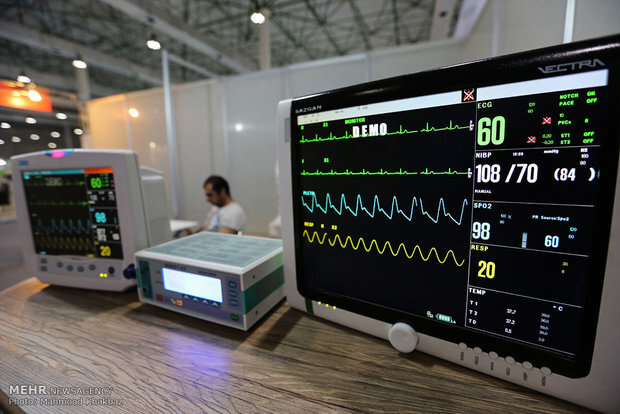Sri Lanka, Kyrgyzstan seek Iran's medical, pharmaceutical expertise

TEHRAN – The ambassadors of Sri Lanka and Kyrgyzstan expressed willingness to import medical equipment and medicine from Iran and benefit from the country’s technology in building medical centers.
On Sunday, Pir Hossein Kolivand, head of the Iranian Red Crescent Society, met separately with Kyrgyzstan Ambassador Turdakun Sydykov and Sri Lanka Ambassador Wishwanath Aponsu.
The Sri Lankan envoy called for importing medical items and equipment from Iran to ease the crisis of medicine shortage in his country.
Aponsu also said that Sri Lanka's economic situation today is extremely critical, especially in the fields of oil, fuel, medicine, etc., and the poor situation in Sri Lankan hospitals is due to the shortage of medicines for cancer patients, diabetics, and medicines for pediatric diseases.
Pointing to Iran as a manufacturer of medicine and medical equipment, he called for cooperation with the IRCS, because Sri Lanka not only has problems in supplying medicine but also with medical equipment.
The Kyrgyz ambassador, for his part, announced readiness to expand medical cooperation with Iran, suggesting the construction of a hospital in the Lakan region, which is one of the deprived areas of Kyrgyzstan.
On a global scale, 56 percent of 500,000 medical equipment items available in the world market have Iranian versions.
Kolivand also announced readiness for cooperation with the two countries and said that Iran has long supported humanitarian activities.
The Iranian Red Crescent Society, in addition to being the only institution in the country that can set up medical centers abroad, also has a high capacity in the field of training aid workers, Kolivand said.
He also noted that Iran can help the countries struggling with medicine and medical equipment shortages.
Share of global market
Iran holds a share of one percent (about $5 billion) in the global market for medical equipment of approximately $500 billion, but the country has the potential to increase the share, according to the statistics of the Ministry of Health.
In 2018, the National Medical Device Directorate reported that the Iranian medical equipment market was worth $2.5 billion, 30 percent of which belonged to over 1,000 domestic firms.
On a global scale, 56 percent of 500,000 medical equipment items available in the world market have Iranian versions. In pharmaceuticals, around 70 percent of Iran’s $4.5 billion markets are domestic products and, in 2018, 97 percent of pharmaceuticals consumed in the country were manufactured locally.
In 2018, 67 percent of the active pharmaceutical ingredients (APIs) used to produce drugs in Iran were made locally.
A total of 227 knowledge-based firms are supplying medical equipment for health centers across the country, according to the Vice Presidency for Science and Technology.
Iranian companies producing medical equipment export their products to 54 countries across the world.
IRCS services
The IRCS, established in 1922, is one of the first and oldest members of the movement and is currently one of the top five societies in the world due to its significant activities in the national and international arenas.
Currently, some 14 medical facilities of the IRCS are offering humanitarian, relief, and health services to the deprived people in 13 countries, including Azerbaijan, Afghanistan, the United Arab Emirates, Bolivia, Ivory Coast, Sierra Leone, Ghana, Congo, Kenya, Lebanon, Mali, Niger, and Ecuador.
In 2005, the IRCS received the Henry Davison Award for outstanding humanitarian services, and the IRCS initiative of volunteers was selected as the best project (out of 50 projects from 45 national societies), by the General Assembly of the International Federation of Red Cross and Red Crescent Societies.
FB/MG
Leave a Comment